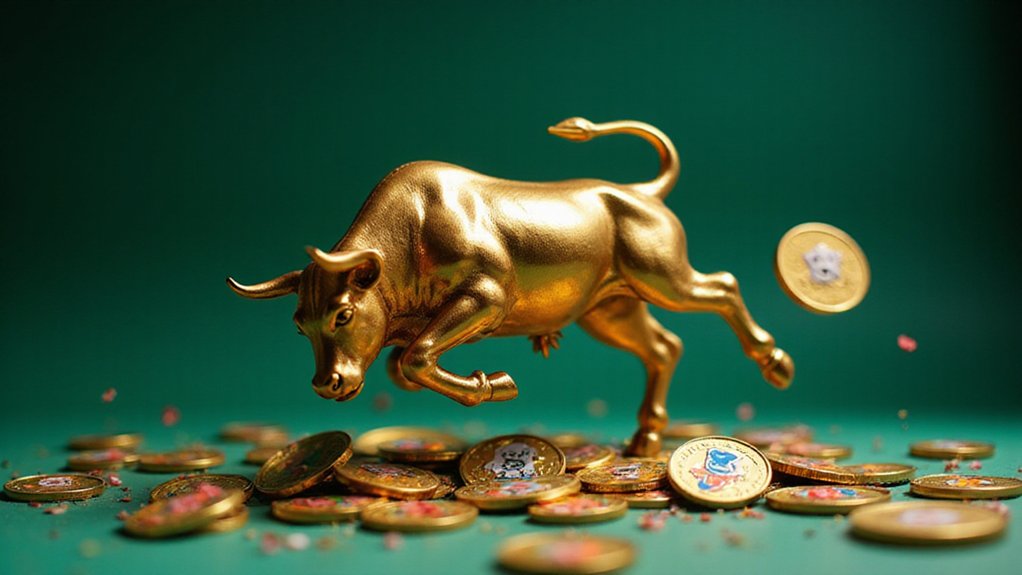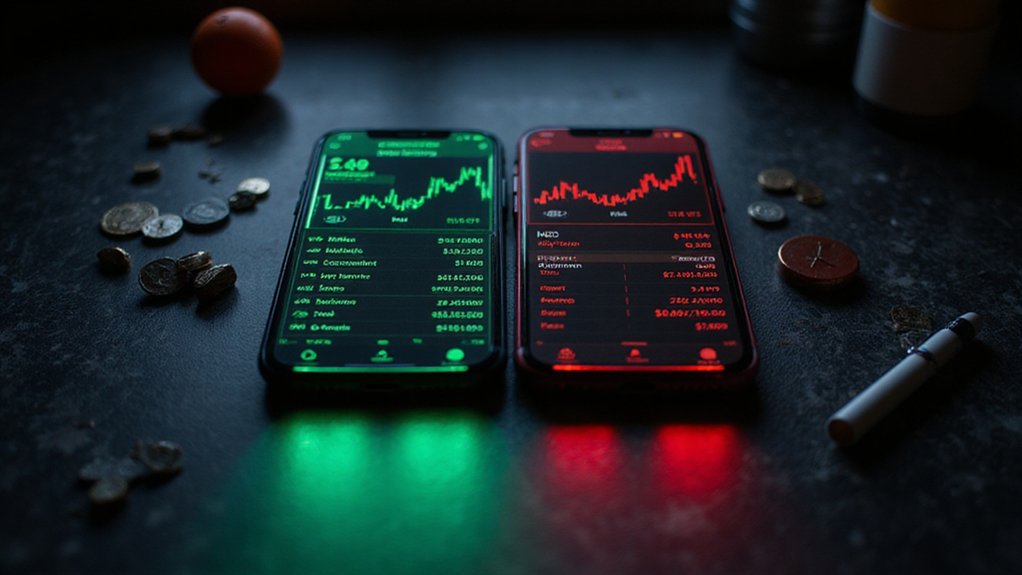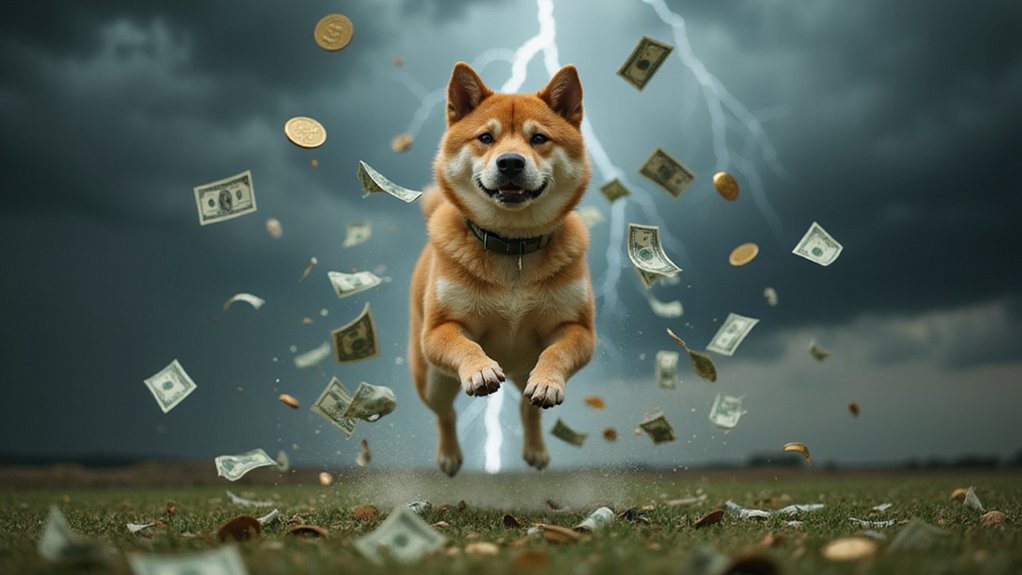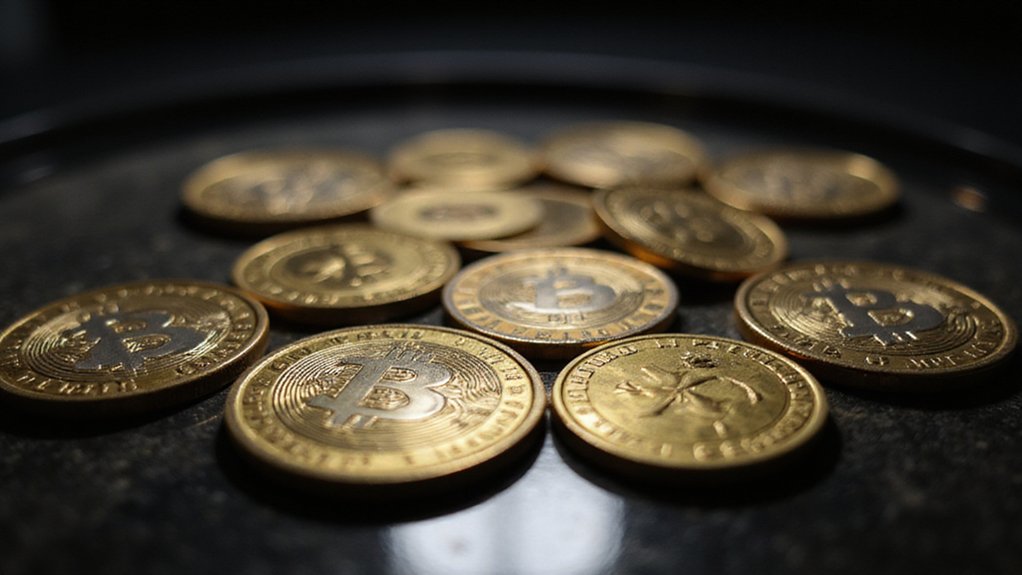While traditional investors wrestle with quarterly earnings reports and fundamental analysis, the memecoin market delivered a masterclass in speculative fervor during July, catapulting its collective market capitalization from $55 billion to a staggering $72 billion—a 29% surge that would make even the most seasoned growth fund managers pause mid-sip of their morning coffee.
The $17 billion capital injection didn’t materialize from thin air (though some may contend memecoins themselves possess similar ethereal qualities). Rather, foundational cryptocurrencies like Ethereum and Solana experienced price rallies that created a ripple effect throughout the ecosystem, demonstrating how even digital assets named after internet memes exhibit measurable beta relationships with their more serious counterparts.
Even memecoins exhibit measurable beta relationships with foundational cryptocurrencies, proving that digital assets named after internet jokes follow serious market dynamics.
Individual performers painted a picture of remarkable volatility masquerading as opportunity. Bonk Memecoin surged 72%, while Floki posted a respectable 45% gain, and Pudgy Penguins waddled to a 58% increase. These figures, impressive as they appear, reflect the sector’s characteristic high-beta nature—where market rallies translate into disproportionate gains that would either vindicate or terrify rational portfolio theory advocates.
Trading volumes reached fever pitch, with CoinMarketCap recording a 24-hour peak exceeding $18 billion and a secondary surge of $17.09 billion on a Saturday (because apparently speculation observes no weekend sabbath). Such liquidity levels indicate renewed investor appetite for higher-risk, higher-reward assets, suggesting a broader sentiment shift toward speculative positions.
The emergence of launchpads like LetsBonk further amplified the phenomenon, providing infrastructure for what traditional finance might politely term “alternative investment opportunities.”
Meanwhile, stalwarts Dogecoin and Shiba Inu continued their established patterns of substantial growth, proving that longevity in the memecoin space relies less on utility and more on sustained cultural resonance.
This surge illuminates a fundamental market dynamic: when investors seek rapid gains, they gravitate toward assets with minimal fundamental constraints. The memecoin sector’s July performance exemplifies how speculative fervor, combined with broader cryptocurrency momentum, can generate returns that simultaneously validate and challenge conventional investment wisdom.
Unlike metaverse tokens that serve as economic backbones for virtual worlds and facilitate purchases of digital real estate and in-game assets, memecoins operate primarily as speculative vehicles driven by community sentiment and cultural phenomena. This fundamental difference in utility and purpose highlights the diverse nature of the cryptocurrency ecosystem, where both virtual economies and meme-driven tokens can coexist and attract different types of investors.
Whether this represents sustainable growth or elaborate digital tulip cultivation remains the $72 billion question.









